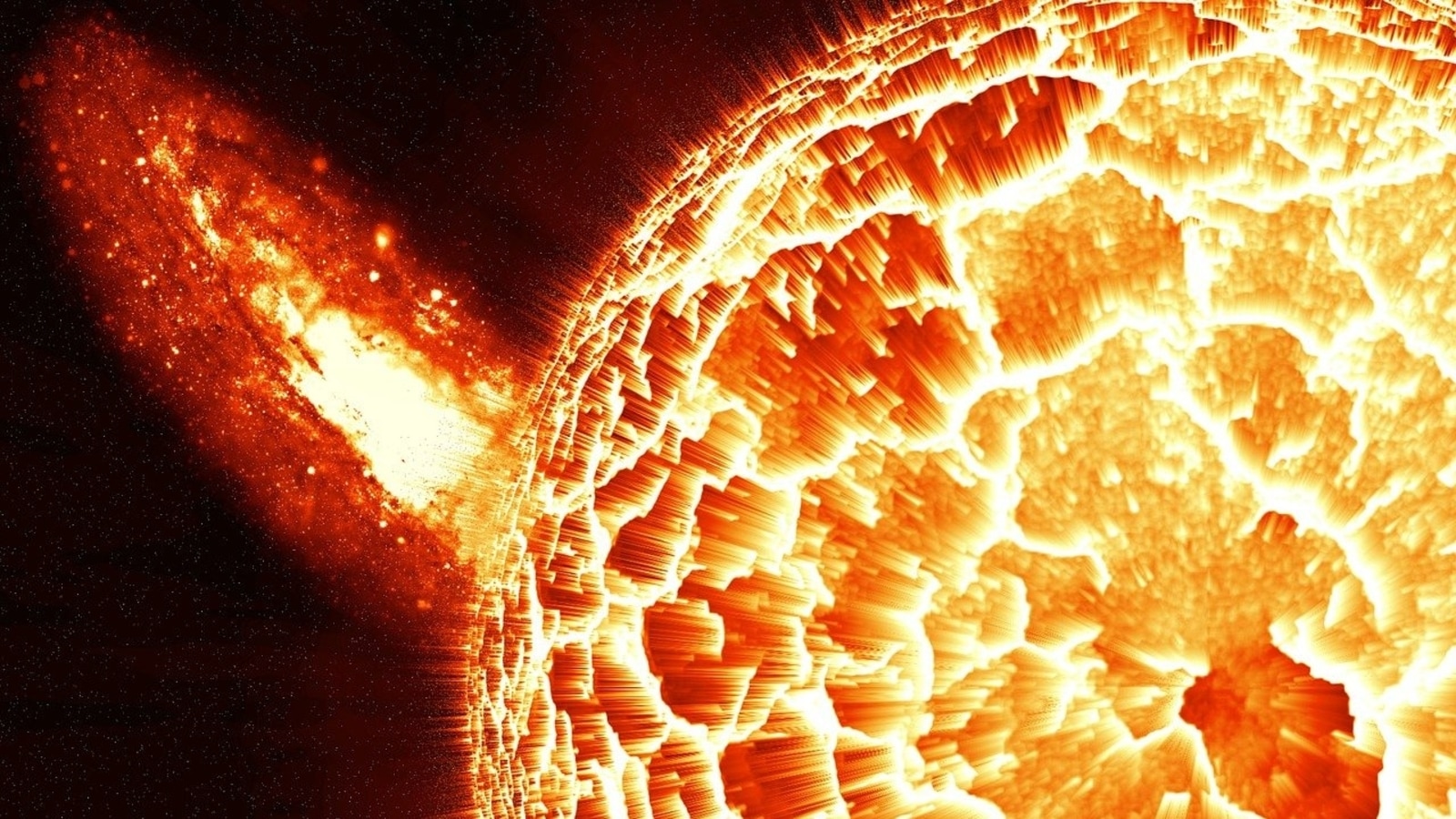200000 km wide sunspot presents solar flare threat, shows NASA's SDO
NASA’s Solar Dynamics Observatory (SDO) has shed light on a gargantuan sunspot on the surface of the Sun which harbours energy for M-class solar flares. Know all about it.

The Sun is at the center of our solar system and is essential for life to exist as it provides warmth, without which Earth would've been a frozen and desolate wasteland. However, it also poses a threat to the planet on some occasions. With the peak of the solar cycle 25 nearing, we've already seen numerous CMEs, solar flares, solar storms, and other particles impact the planet. While most of them have left Earth unscathed, a handful of them have caused effects such as radio disturbances, and power grid failures.
In a new development, NASA's Solar Dynamics Observatory (SDO) has shed light on a gargantuan sunspot on the surface of the Sun which harbours energy for M-class solar flares. Know all about it.
M-class solar flares
According to a SpaceWeather report, NASA has revealed that a sunspot on the solar surface contains almost 12 dark cores. This sunspot spans a staggering 200,000 kilometers, which is more than 10 times the diameter of Earth! It has been named Sunspot Complex AR3490-91-92. As per the report, the sunspot is slowly turning towards Earth and harbours dangerous energy which could hurl out M-class solar flares in the next couple of days.
The report states, “It's 200,000 km wide, contains a dozen dark cores, and is crackling with M-class solar flares. Sunspot complex AR3490-91-92 is so big it takes 3 numbers to label it. The active region is turning toward Earth and will pose a threat for Earth-directed flares by mid-week.”
For the unaware, solar flares are classified according to their strength on the logarithmic scale, similar to how earthquakes are measured. The smallest ones are A-class which occur at near background levels, followed by B, C, and M, while X-rated flares are the strongest.
Sun's impact
Our Sun has a thin layer of second atmosphere that lies just above the photosphere as well as a huge corona. This is the region where we see most of the solar phenomena such as solar flares, prominences, and coronal mass ejections occur, most of which can directly impact Earth. While the Sun's energy is crucial for life to exist on Earth, its related solar phenomena can cause severe damage, especially to tech instruments.
Strong, solar flares, such as X-class flares, that the Sun hurls out not only have the potential to disrupt global communications, harm satellites, and bring down the power grids to create blackouts but also create radiation storms which can give small doses of radiation to the people flying in airplanes at the time!
Catch all the Latest Tech News, Mobile News, Laptop News, Gaming news, Wearables News , How To News, also keep up with us on Whatsapp channel,Twitter, Facebook, Google News, and Instagram. For our latest videos, subscribe to our YouTube channel.





























